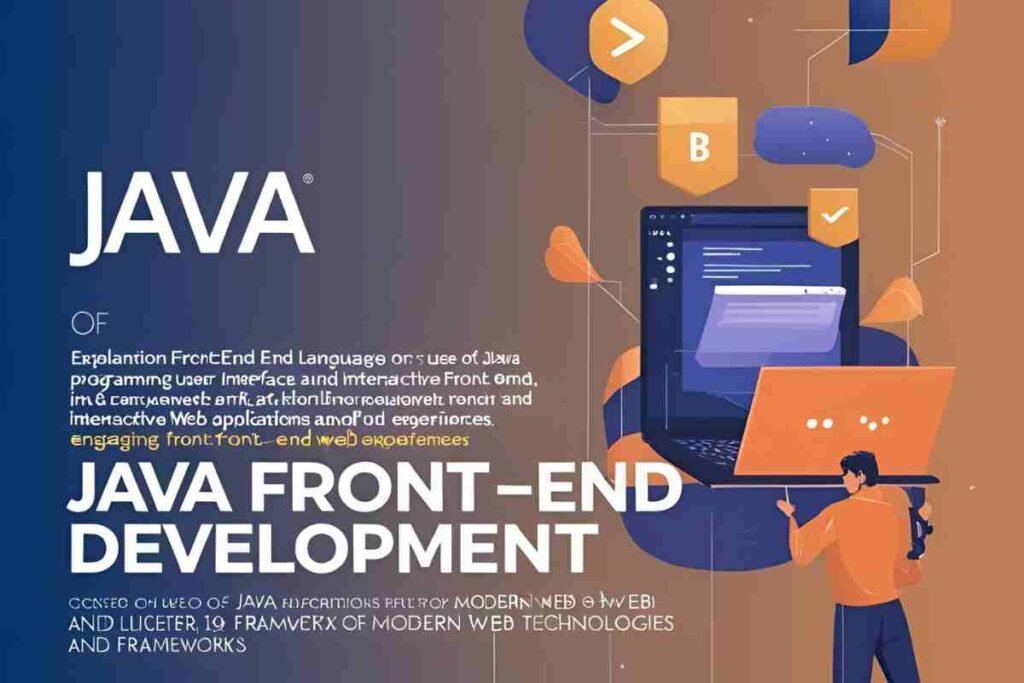In the fast-changing world of web development, Java still holds its ground not just in the backend, but also on the frontend.
The term Java front end might sound unusual at first, but it plays a powerful role in creating rich, user-friendly interfaces, especially for enterprise and desktop apps.
This guide explores the essential tools, technologies, and frameworks that make Java a reliable choice for frontend development in today’s tech landscape.
What is Java Front End?

Java front end refers to using Java to create the visual parts of a website or application that users interact with. While Java is best known for backend logic, it also supports building UI through different tools and libraries.
Although languages like HTML, CSS, and JavaScript dominate the frontend scene, Java remains relevant through technologies like JavaFX, Swing, and web-based integrations.
Java Front End Technologies
Java may not be the go-to language for frontend development today, but it still offers several solid technologies for creating user interfaces—especially for enterprise and desktop applications. Below are the core Java front end technologies that developers commonly use:
JavaFX
JavaFX is a modern GUI toolkit and the successor to Swing. It supports rich user interface features, including 2D/3D graphics, media playback, and advanced UI controls. It’s ideal for building cross-platform desktop and web apps with a more polished look.
Swing
Swing is the older, widely used GUI library in Java. It offers a wide range of components and is still maintained for legacy systems and applications. While it lacks some modern UI features, it’s stable and well-documented.
Vaadin
Vaadin is a full-stack framework that allows you to build modern, responsive web applications entirely in Java. It simplifies frontend development by eliminating the need for HTML, CSS, or JavaScript knowledge, making it ideal for Java-centric teams.
GWT (Google Web Toolkit)
GWT enables developers to write frontend code in Java, which is then compiled into JavaScript. It’s especially useful for those who want to build complex browser-based apps without diving deep into JavaScript.pectations.
Benefits of Using Java for Frontend Projects
While Java isn’t typically the first language that comes to mind for frontend work, it brings several unique benefits:
- Cross-platform compatibility: Java’s write once, run anywhere” principle allows developers to build apps that run consistently on various operating systems.
- Strong community and support: With a vast ecosystem, developers can easily find resources, forums, and documentation for frontend development using Java.
- Full-stack development in one language: Teams already using Java for backend services can streamline workflows by using Java-based frontend frameworks like Vaadin or GWT, reducing context switching between languages.
- Strong integration with enterprise systems: Java excels in large-scale business apps where UI must communicate with secure, complex backend systems.
Popular Java Front End Tools
Let’s look at essential java front end tools that developers commonly use:
JavaFX Scene Builder
A drag-and-drop UI builder for JavaFX. It helps developers create interfaces visually, reducing code complexity.
NetBeans IDE
An integrated development environment that supports JavaFX and Swing development efficiently.
Vaadin Designer
A visual editor for building web apps using the Vaadin framework.
These tools simplify the development process and allow for quicker iterations.
Top Java Front End Frameworks
Many java front end frameworks are available to help developers build responsive, attractive user interfaces. Some top choices include:
Vaadin
Ideal for full-stack Java development. It handles frontend rendering using Java, perfect for enterprise apps.
GWT (Google Web Toolkit)
Converts Java into JavaScript, allowing frontend development without learning JS in-depth.
JSF (JavaServer Faces)
A component-based framework often used in large, server-side rendered Java applications.
These frameworks offer various approaches depending on whether you’re developing a web or desktop application.
When Should You Use Java for Frontend?

Here are a few situations where Java makes sense as a frontend choice:
- Building internal enterprise tools.
- Creating UI for desktop software.
- Maintaining legacy systems written in Java.
- Teams already skilled in Java wanting to avoid switching languages.
That said, for dynamic web applications, modern JavaScript frameworks like React or Vue may be more efficient.
Key Skills Required for Java Front End Development
To work effectively in Java front end development, a developer should focus on mastering these core areas:
- JavaFX and Swing: These two GUI libraries are essential for building Java-based desktop interfaces.
- Understanding MVC Architecture: Model-View-Controller design is frequently used in Java UI applications to separate logic from design.
- Working with Frameworks: Familiarity with tools like Vaadin or JSF allows developers to build web-based UIs in pure Java.
- Tool Proficiency: Experience with IDEs like IntelliJ IDEA or NetBeans, along with visual builders like Scene Builder, speeds up the UI creation process.
- Basic UI/UX Principles: Although Java handles the logic well, understanding layout design, user interaction, and readability improves application usability.
These skills ensure that a developer can not only write functional code but also create user-friendly, maintainable frontend interfaces using Java.
Conclusion
Java remains a reliable choice for frontend development in specific scenarios like enterprise tools and desktop applications. Tools like JavaFX, Vaadin, and GWT make UI creation possible using familiar Java syntax.
It offers strong backend integration, security, and platform independence. While it may not rival modern JavaScript frameworks in flexibility, it holds its ground in the right context. For Java developers, exploring these frontend options can be a valuable skill expansion.
FAQs
What is Java front end development?
It refers to creating user interfaces using Java technologies like JavaFX, Swing, or Vaadin.
Is Java still used for frontend development?
Yes, especially in enterprise and desktop applications where Java is already part of the stack.
Which are the best Java front end technologies?
JavaFX, Swing, Vaadin, and GWT are among the most widely used.
What is the role of JavaFX in UI design?
JavaFX helps build modern, responsive UIs for both desktop and web applications.
Why choose Vaadin for frontend?
Vaadin allows full-stack Java development with frontend and backend in a single language.
Is GWT still relevant today?
Yes, GWT is useful for converting Java code into JavaScript for frontend tasks.
What are the challenges of Java frontend?
Limited community support, slower rendering, and a steeper learning curve in some cases.
When is Java frontend the right choice?
It’s ideal for enterprise tools, desktop apps, or teams already skilled in Java.







